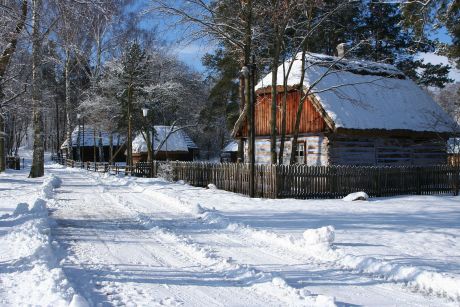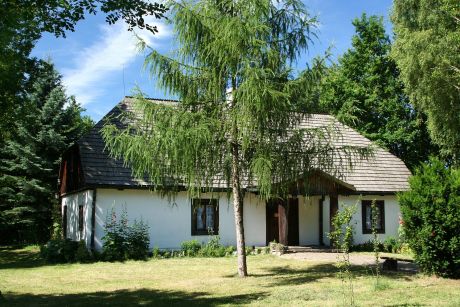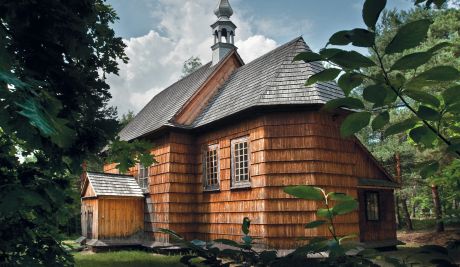As all the post mills in the Museum, the windmill has three storeys. On the lowest one there is the basis – the post, which constitutes the immobile part of the windmill, the main element of which is “stębr” – a vertical pole, upon which the whole building with the wings rotates around its own axis. The post mill assumed its name from the basis. It is the oldest type of windmills in Poland. Rotating of the building in one direction was facilitated by a mobile, manual spinning wheel connected with a drawbar, which constituted an element of the windmill.
The second storey in the windmill is occupied by machines used for the flour production: sifter which sorts the flour in accordance with the thickness, flour box and the elevator which transports the milled material again from the sifting box to the roller mill. This storey also houses mills for buckwheat and millet. After the Second World War the mill was equipped with an electric drive, which by the overhead transmission moved the roller mill, the elevator, the sifter and the composition of mill stones.
The most important is the third storey, which houses the following: a transmission shaft which moves the drive from the wings through the king and top wheels onto the roller mills, a brake which stops the shaft, an elevator for hoisting of bags with crops and an elevator’s drive. The grain milling in order to obtain the flour was started upon this storey. A portion of the grain was milled upon the stones or in the roller meal, and then in the form of bran it fell into the sifter. This place served for sieving of the flour, whereas the bran were moved by the elevator back to the roller mill. This process was repeated several times. As a result flour and bran were obtained. During the milling process, the so-called “dust” appeared, i.e. a small technological weight loss of a grain portion.
In the windmill from Gabowiec the flour was made upon the roller mill equipped with iron, engraved cylinders, known as shafts. The mill stones served only for the production of corn feed for animals, the so-called ground grain. In the region of Radom the roller mills started to be used after the First World War. Another modern element was also constituted by the sifter shaped as a cylinder covered with gauze or a wire net with mesh of different cross-section.










